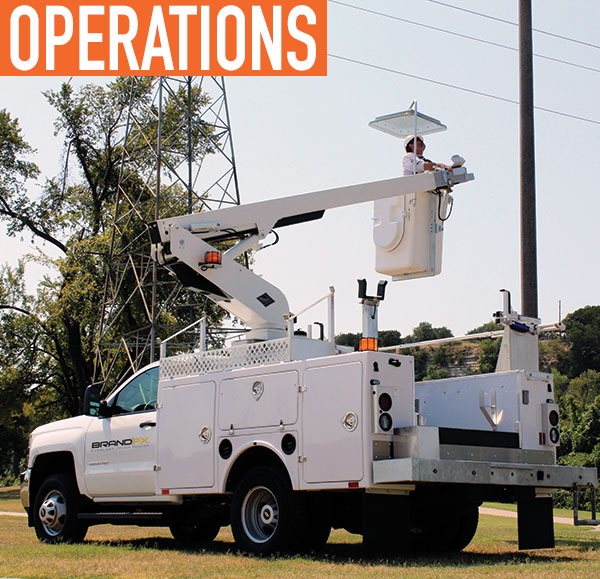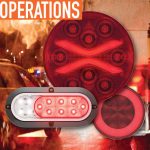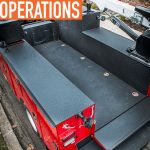BrandFXTM recently introduced its UltimateFXTM all-composite fiberglass-based service truck body and understructure combo which is manufactured to match the toughness of steel, while weighing about 60% less. The lightweight—yet tough—combo is designed for 56LS and 60LS service bodies. BrandFX used the latest advances in structural design and composite chemistry to develop the UltimateFX, which the company says affords maximum weather resistance and will not corrode or oxidate.
“There has never been an all-composite body plus understructure on the market before,” says Ben Rookey, marketing manager for BrandFX. “It’s the first of its kind.”
56LS AND 60LS
The 56LS bodies are suited for applications such as plumbing, electrical, utility, telecommunications, HVAC, and more. The 60LS service bodies are suited for fleets with some of the same applications, such as plumbing, electrical, utility, telecommunications, and HVAC, as well as lawn and pest control.
“Currently, we offer the UltimateFX in 56-inch cab to axle (CA) for Ram, Chevrolet, GMC, and Ford single rear wheel applications,” Rookey says. “And, 60-inch cab to axle (CA) for Ram, Chevrolet, GMC, and Ford in dual rear wheel applications.”
LIGHT YET TOUGH
Most truck manufacturers have long relied on the dependability of steel and aluminum for constructing fleet trucks, with fiberglass-based composite bodies not even a consideration. The assumption has been that such bodies wouldn’t provide nearly the needed toughness. Not so, according to BrandFX, which says composite bodies often outperform steel and aluminum truck bodies when compared head to head. The company says composite bodies combine a blend of high-strength performance with lightweight construction.
“Fleets are focusing, now more than ever, on lightweighting their service vehicles. Saving money on fuel, significantly less wear and tear on the chassis, suspension components, tires, brakes, etc. are all benefits from running a fleet at a lighter weight,” Rookey says. “Our 56-inch CA UltimateFX weighs only 496 lbs, a comparable steel body weighs between 1,100 lbs and 1,300 lbs, so our customers are getting about a 60% weight savings.”
Further, the company states that the composite material won’t bend, dent, or crack, even if exposed to extreme environmental conditions. Plus, BrandFX’s composite truck bodies are compatible with most aerial and crane applications.
Another misconception about composite bodies is that they are difficult to repair. Yet, according to BrandFX, in many cases, composite bodies are easier than steel or aluminum, as smaller areas of damage can be cut out, repaired, and replaced. Damage often can be fixed in a few steps using common tools such as a putty knife, industrial tape, utensil for mixing, straight edge for smoothing, orbital sander, and buffing wheel.
A hefty deterrent some fleet owners bend to is the belief that composite bodies are unaffordable. While they are more expensive upfront than steel and aluminum, composite bodies have an average lifespan of more than 20 years, and can be transferred from one chassis to another.
MORE ADVANTAGES
Another advantage, according to BrandFX, is reduced routine maintenance costs because the lightweight construction places less stress on shocks, brakes, and suspension components. Top that off with fuel savings because of the lightweight design—up to $1,600 per year on a truck driven 25,000 miles—and the initial investment can be offset over time.
“A lighter body also gives the option of downsizing the chassis required for having an increased payload available when it is required,” Rookey says.
Some of the country’s largest service companies are choosing advanced composite bodies for the above reasons, according to BrandFX.
“Because modernizing your fleet can be this simple,” Rookey says.
FOR MORE INFORMATION
BrandFX is the world’s largest producer of advanced composite service bodies, line bodies, inserts, toppers, and covers. Find out more, visit www.brandfxbody.com.
_______________________________________________________________________
MODERN WORKTRUCK SOLUTIONS: DECEMBER 2017 ISSUE
Did you enjoy this article?
Subscribe to the FREE Digital Edition of Modern WorkTruck Solutions magazine.
![]()





